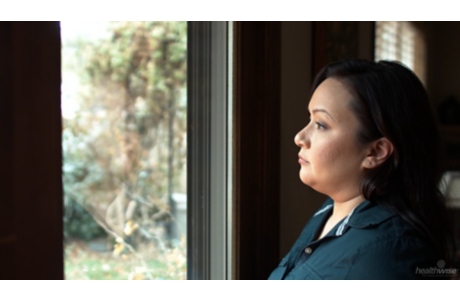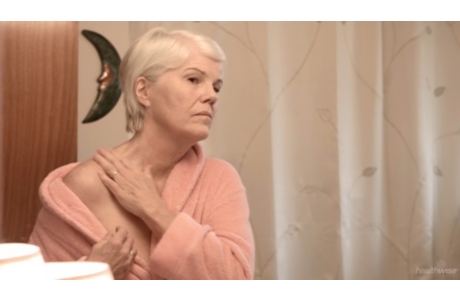Radiation for Early-Stage Breast Cancer
Topic Overview
When is radiation used for early-stage breast cancer?
Radiation therapy is given to most women with early-stage breast cancer who choose breast-conserving surgery such as lumpectomy. Their other surgery option is mastectomy, which removes the whole breast. Many women choose breast-conserving surgery plus radiation so they can keep their breast.
Women who have breast-conserving surgery plus radiation have the same survival rates as women who have mastectomy.footnote 1
How is radiation therapy for early-stage breast cancer done?
Breast cancer is usually treated with external beam radiation. For this treatment, the radiation comes from a machine outside the body and is aimed at the cancer. In most cases, the whole breast is treated with radiation. If cancer was found in your lymph nodes, other areas may be treated with radiation too.
Radiation treatments are painless, like getting an X-ray. They are usually given 5 days a week during short appointments at a hospital or clinic.
Standard radiation treatments are usually given over a period of 5 to 7 weeks. Another option is to have higher doses of radiation for about 3 weeks. This is called hypofractionated radiation therapy.
What are the side effects of radiation therapy?
Radiation is very good at killing cancer cells, but it can also affect normal cells. This can lead to side effects. The most common ones are:
- Feeling very tired.
- Skin changes in the area treated with radiation. The skin may be red, dry, and sore.
- Swelling and heaviness in your breast.
Most side effects will go away within a few weeks after you finish your treatments. But it may take longer to get your energy back.
When is radiation not used after lumpectomy?
Some women may not benefit from radiation therapy after lumpectomy. You may not need radiation if all of the following are true for you:footnote 4
- You are age 70 or older.
- Your tumor was small (less than 2 cm).
- No cancer was found in your lymph nodes.
- You are taking hormone therapy, such as tamoxifen, because your tumor contained hormone (estrogen or progesterone) receptors.
Health Tools
Health Tools help you make wise health decisions or take action to improve your health.
References
Citations
- Fisher B, et al. (2002). Twenty-year follow-up of a randomized trial comparing total mastectomy, lumpectomy, and lumpectomy plus irradiation for the treatment of invasive breast cancer. New England Journal of Medicine, 347(16): 1233–1241.
- START Trialists’ Group: Haviland JS, et al. (2013). The UK Standardisation of Breast Radiotherapy (START) trials of radiotherapy hypofractionation for treatment of early breast cancer: 10-year follow-up results of two randomised controlled trials. Lancet Oncology, 14(11): 1086–1094. DOI: 10.1016/S1470-2045(13)70386-3. Accessed March 24, 2015.
- Smith BD, et al. (2011). Fractionation for whole breast irradiation: An American Society for Radiation Oncology (ASTRO) evidence-based guideline. International Journal of Radiation Oncology Biology Physics, 81(1): 59–68. DOI: 10.1016/j.ijrobp.2010.04.042. Accessed March 24, 2015.
- Van de Water W, et al. (2014). Breast-conserving surgery with or without radiotherapy in older breast patients with early stage breast cancer: A systematic review and meta-analysis. Annals of Surgical Oncology, 21(3): 786–94. DOI: 10.1245/s10434-013-3374-y. Accessed March 24, 2015.
Current as of: December 19, 2018
Author: Healthwise Staff
Medical Review:E. Gregory Thompson MD – Internal Medicine & Kathleen Romito MD – Family Medicine & Jimmy Ruiz MD – Hematology, Oncology
This information does not replace the advice of a doctor. Healthwise, Incorporated, disclaims any warranty or liability for your use of this information. Your use of this information means that you agree to the Terms of Use. Learn how we develop our content.





